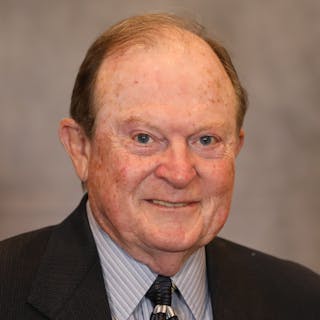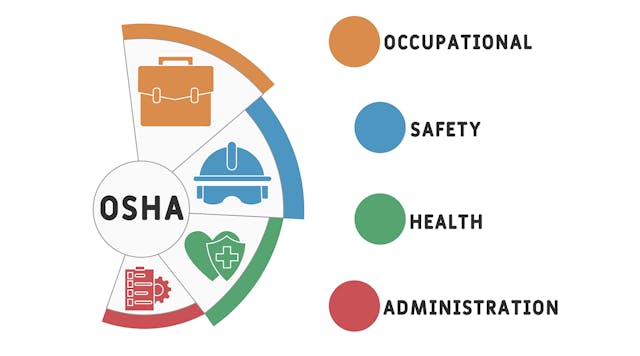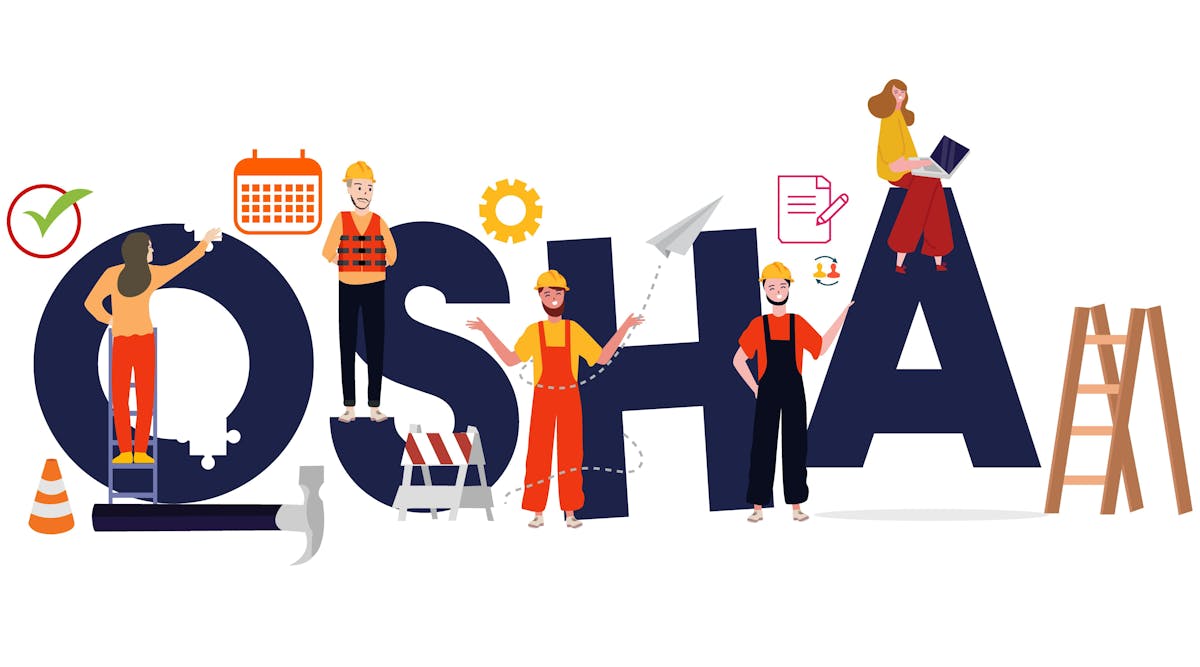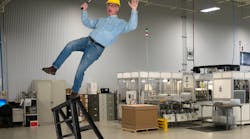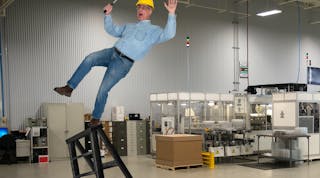Jim Thornton, CSP, CIH, FASSP, FAIHA, jokes that he’s been around the block once or twice. But behind his easy laugh, there’s a strong sense of servant leadership.
“I have always felt a duty to give back,” he says. “It is my goal that every worker goes home in the same or better condition as he or she came in. That’s why I continue what I do. I feel like maybe I’m still on the Earth to make a difference. It is my passion, and that’s what drives me.”
Thornton is president of consulting firm Alpha Industries LLC, following 40-years of directing safety, health and environment at Huntington Ingalls Industries, the nation’s largest military shipbuilder. Effective July 1, he will steer the ship as president of the American Society of Safety Professionals (ASSP).
EHS Today’s Managing Editor Nicole Stempak spoke with Thornton about his plans for the coming year. Their conversation has been lightly edited for clarity and for length.
EHS Today: How would you characterize or describe the state of the safety industry at this particular moment in time?Thornton: COVID has required us to think about things in a different way. We have to think about people working from home. We have to think about job openings. How do new people enter the workplace? How do they get acclimatized to the environment they’re asked to work in? How are they educated in terms of safety?
Most of the professionals that I talk to indicate some amount of frustration with new employees entering the workplace and having to retool, reeducate, or reacclimate them into the work environment. But, if you ask, “Are there job openings in the field?” Yes, there are plenty of job openings. There’s a high demand for safety professionals.
What do you think are the most pressing issues facing safety right now?
I’d say the Number 1 challenge is that as the home is now becoming a more permanent workplace, what are the challenges and what are the solutions should we be engaged in. A question [we have to ask] as employees work at home is: What responsibility, what duty, do safety professionals have to ensure that their home, which is now the workplace, is safe—without playing Big Brother? Is your workstation set up safely? Do you have extension cords running across the floor, which you may trip on? Do you have anti-glare screens on your computer so that you don’t have eye strain?
We also keep our eye on what injuries are occurring and what fatalities are occurring. We know that falls continue to be a big issue in safety. There’s a great many fatalities as well as trenching. OSHA has just recently put in special emphasis programs for these particular hazards. We’re not sure why the rates are rising in these areas specifically, but we know that we need to figure that out, and we need to implement solutions.
What issues aren’t safety professionals focused on, but should be?
I touched on a couple of specific hazards, but I think safety professionals need to continuously think about the future. We need to think about what new industries are coming online and what new hazards are surfacing with the new economy. We need to really see around the corner and see what challenges are going to be presented in the future. And furthermore, what are the solutions to those challenges. We must be vigilant. We must be proactive in anticipating, quantifying and correcting hazards out there.
As you say this, I can hear safety professionals say, “Yeah, but how am I supposed to do more when I can’t even manage what I currently have?”
Well, there’s always that. Some of the [things I’ve talked about] were not on the plate a couple of years ago. The plate isn’t getting larger, but the contents of the plate are, and that’s always going to be an issue.
Where do you think the safety industry is headed in the coming years?
We also need to strategically think about how we continue to grow our influence. How do we engage with a C-suite? As safety professionals, we can determine what the hazards are, we can determine what the solutions are. I think a great part of it that we haven’t thought about is the soft skills. How do I quantify a problem in a way that senior executives, my boss, the worker or whoever the audience may be will respond to?
I also think that because people are doing many more things digitally, writing skills are equally important. Yes, we have spell check, and we have lots of tools, but I think constructing a narrative about a problem or an issue or a hazard—and then recommending solutions—is very important. I think we tend to think about hard skills, but we really need to understand communication skills as well. I’m working with another group within ASSP in a volunteer capacity to talk about communication solutions for safety and health professionals. That’s getting to be a lost art.
This isn’t your first time in a leadership role. What are you planning for your time at the helm of ASSP?
We’re in the middle of developing the strategic plan for the next three to five years. That strategic plan will be kind of a road map of how we’re going to make our decisions, including budgeting and tactical planning. I am very engaged in that, so that is probably my Number 1 priority in terms of carrying something over the finish line.
The second thing that we are doing, and I’m very interested in, is our member value project. Our members are safety professionals in all kinds of industries with an untold number of hazards. We need to understand what creates value for our members while at the same time providing those services at a fair and reasonable cost. We’ve sent out an assessment of our members. We’re also looking at different stages of membership because new members need different services and different things than do more senior members.
The next thing I’m very committed to is our governance update. We formerly had the House of Delegates, which is basically kind of an overseer group of board operations. ASSP members voted to sunset the House of Delegates, which was replaced by an at-large Advisory Group to modernize our governance model. We feel like with a larger Advisory Group, we have many more ears to the ground to keep us posted on new developments and how our reaction to that ought to be. We’re in the middle of putting that to work.
The last thing I’ll mention, and it’s something we’re just starting to think about, is that there are several like-minded occupational safety and health organizations. We are partners with some of them, but what I would like to see is a little more engagement. If we can find opportunities for synergy, it would make the overall profession stronger and better. Perhaps there are opportunities for us to share some project development. We’re still beginning to think about that.
Those are the things that I am most excited about in my term coming up. Even though that’s three or four things, let me tell you, that’s a platter—it’s not a plate. We have strong leader leadership. We came through COVID very nicely. We had a couple of, you know, not the best years, but we are doing fine financially, so we’re in a position to really move forward.
What would you like to see from Washington?
I think OSHA has taken a backseat in the worldview of Congress. We’re helping fund a war [in the Ukraine]. We’re doing lots of big things. I think the agency is probably down on the list in terms of engagement by Congress.
OSHA has not taken a budget reduction, but I think increased revenue would offer the agency more opportunity to do things, like consultative safety, that could go out and help small businesses not only comply but help with their programs. Most people think that American workers largely work for large corporations. They really work for medium and small companies. Those are the ones that, most of the time, cannot afford a full-time staff for safety. I think the consultative program by OSHA could be helpful to small businesses. If we—management, labor and OSHA—can figure out a better scheme of working together, we’d be better off.
My worldview of Congress and D.C. in general is, let’s keep our eye on the ball on safety. I know there are large things going on in the world, but let’s not lose sight of people going home in the same condition that they came to work in.
I’ve heard a lot of talk about total worker health, but I’ve also heard a lot of pushback, that safety should focus on what it has always done: SIFs, DART, TRIR, etc. What do you make of it all?
Traditionally, safety professionals have focused on work inside the plant, inside the gates of the facility. The idea was we would take a look at the hazards, and we would get controls implemented so that people would not be hurt. However, we also need to focus on the people. If the people come in to work not in the best state of health, they’re more prone to be injured or made ill in the workplace. We need to look inside the gate. That is the new frontier and safety.
I am a big proponent of total worker health (TWH). I believe that if we want to reduce injuries even further, we have to seek new solutions. What TWH really means is working with employees to provide them services, education and even incentives to enter the workplace in a healthier state for, really, for their own good.
TWH includes mental health. When an employee comes to work, and he’s had a fight with a wife or an argument with his daughter or son, his mind is on something else. Then complacency sets in, and an accident occurs. What do we do? We go investigate it, and we say the guard was off of the machine. Well, we should have asked the next question: Why is the guard off of the machine?
If you do the root cause [analysis], I suspect a fair amount of these injuries are happening because the employees are entering the workplace in a poor mental state. Supervisors need to be in a position to understand that something’s wrong with Joe. And Joe needs to be able to tell his boss, “Look, I’ve just had a big argument. Let me do something else till I get myself together.”
Can you share how you think safety can embrace a diversity of thinking?
I’ve been in the profession a long time. I’m very pleased that we see a lot of females coming into the profession. They represent a great percentage of our membership, and it’s growing. It’s important to have diversity of thinking. That will help us drive injuries down even further.
We have several [common interest] groups. We have the Women in Safety Excellence (WISE) group, the Blacks in Safety Excellence (BISE) group, Hispanic group and so forth. We are very inclusive about our thinking, and the reason is that different ways of thinking about the problem can bring different and better solutions. I think we are doing a really good job of that.
The primary thing I want to emphasize is the safety profession cares about everybody. Whatever your gender is, whatever your thinking is, whatever religion you belong to, ethnicity—all of those things. As safety professionals, we just see people. We want to help people. Something I really treasure about the safety professional [is that we want to send] people back home to their families, no matter what family they came from.






